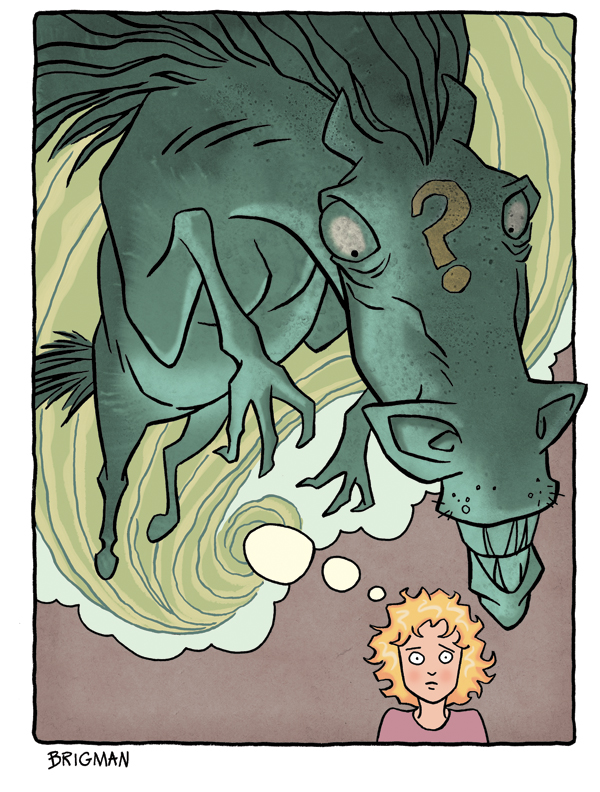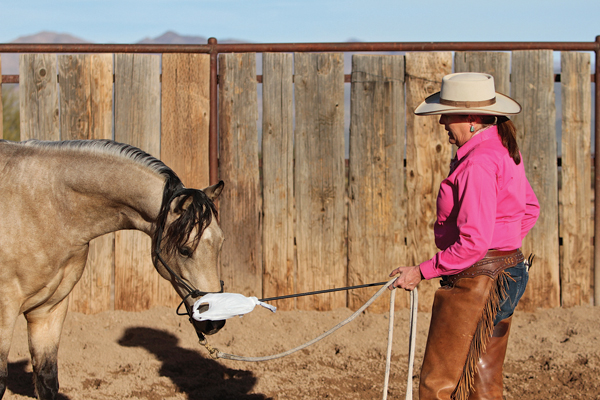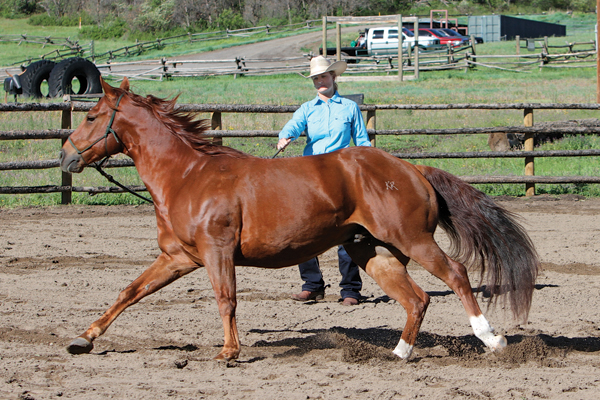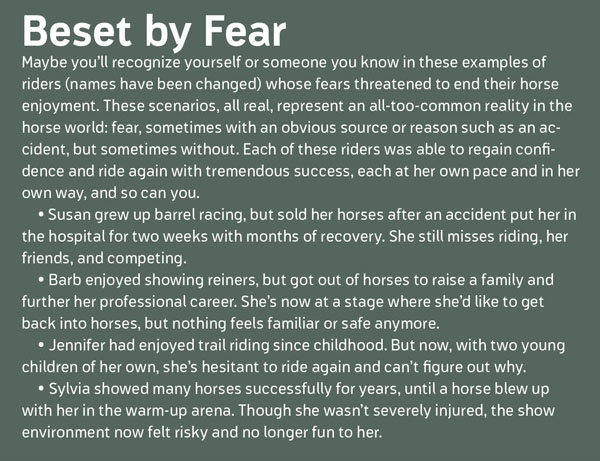Riding is supposed to be fun. But when you experience fear that you can’t seem to shake, frustration replaces that fun. Your fear may trace to a specific incident, such as being bucked off or injured. Yet you needn’t have had an accident for fear to develop, because other factors can be at work. Without tools to overcome fear, you may find that it simply gets the upper hand.

I’m here to give you a hand. My expertise is in helping horse owners who have fear issues. I’ll explain the basis of fear, and what can influence it. I’ll provide examples of riders with fear issues you may recognize (“Beset By Fear,” page 68). I’ll also give you a checklist to use toward rebuilding your confidence.
The Basis of Fear
Fear is a survival mechanism that causes you to avoid situations when your subconscious recognizes that you’re lacking in ability or skills. The sheer power of a panicking, 1,200-pound prey animal can naturally trigger a strong message for you to avoid this type of situation. Your brain is hard-wired to relive disastrous situations over and over, searching for the moment that something else could have been done to produce a different result. This is why the memory of a bad horse accident or experience is so hard to shake.
Many of my clients are women (though fear with horses isn’t exclusive to women), and I’ve observed that many go through three distinct stages throughout their lives: young/fearless; caretaker of small children/cautious; and losing bone density/extremely cautious. Again, the survival mechanism is at work. Instinctively, the young mother knows that she risks not only herself but also her ability to care for her children; a woman beginning to lose bone density knows she doesn’t bounce back like she used to and feels physically vulnerable.
Because fear is so key to survival, it’s a very powerful emotion and easily fed by your focused thoughts. Thus, if you focus on the potential dangers of riding, your thinking pattern keeps your fear going. To break its paralyzing hold, you’ll need to practice a shift in thinking, allowing for new thoughts of possibility to take over.
Knowledge Replaces Fear
You now have your first tool: You’ve recognized both the function of fear (nature’s way of keeping you safe) and some of its sources (often your own physical vulnerability and lack of skills). Your next tool in overcoming fear—and it’s a critical one—is to understand why horses act and react as they do. You need this knowledge to influence their behavior effectively and safely, whether from the ground or in the saddle. When you develop the skills to influence your horse’s mind in any given situation, your old fearful thoughts simply get crowded out with newfound strategies.

Unfortunately, there’s a common belief that a horse can be controlled using physical restraints or with “lots of wet saddle blankets.” While these approaches may have short-term results, it’s my experience that true confidence is gained by using techniques based on herd dynamics and equine psychology. Influencing the horse’s mind controls his body with a more lasting and predictable effect than restraining gear or exhausting work.
A full discussion of equine behavior and how to influence it is beyond the scope of this article, so I’ll keep it at this: As prey animals, horses have some instinctive survival behaviors of their own. They’re designed to survive by spooking, bucking, and bolting in response to perceived danger. They’re also designed to survive by looking toward other horses for direction, especially those demonstrating leadership qualities. This presents an opportunity for you, because horses can recognize, respect, and respond to an approach using benevolent leadership. It’s also the basis of natural horsemanship.
Checklist Toward Confidence
Recognition, understanding, and discussion of fear give you a great beginning, but to truly conquer it, you must take action. Here, as a third tool, are a few methods you can put into practice for garnering real results in overcoming fear.

Use tools for specific communication. For you to regain your confidence, it’s crucial that you establish leadership with your horse. To ensure that your leadership approach is clear, use tools designed for specific communication. Everything you use to support communication, from the halter’s physical touch around your horse’s head and the weight of the lead rope to the extension of a teaching or cueing stick, makes a huge difference to the horse.
Resist well-meaning advice. If you’ve fallen or been thrown from a horse, you’ve probably heard the line “just get back on!” When fear has a paralyzing effect, just getting back on can feel almost impossible, and can also lead to more trouble. A fearful rider who does remount can easily panic, inadvertently pulling the reins and adding vice-like leg pressure. Even a calm horse is likely to panic right along with the rider. Stay on the ground while you figure out your best approach through your fear.
Work from the ground. Along with groundwork that establishes and affirms your leadership, ground simulations will allow you to “get back on the horse” without actually getting back on. By using just a halter and lead, you can retrain your hands for the feel required to send your horse forward, backward, and to each side. Muscle memory is key to responding effectively when you don’t have time to think, so this approach builds your confidence and transfers to effective use later with the reins.

Use seated balance simulations. Simulations can help develop your seated balance, instilling muscle memory into your core so that it reacts instinctively when thrown off balance. To improve core strength and balance, consider learning to ride a unicycle, or look into a relatively new product called Balance Rider. It’s designed to develop seated balance by closely simulating a horse’s movements, and can accelerate your journey toward confident riding.
Use simulations on your brain. Simulations can help condition your brain to remain calm and responsive during unexpected occurrences—which is why first-responders, the military, and even schoolchildren drill for emergencies. Even non-horse experiences can help you learn to become comfortable and responsive while in a heightened state from adrenalin, benefiting you if a crisis arises. Consider pursuing activities outside your comfort zone, from safe-yet-terrifying roller coasters and haunted houses to riskier white-water rafting, rock climbing, or skydiving.
Practice with a safe and sane horse. If available, use a horse that’s calm and reliable as you first develop and practice these new techniques. A solid, confident horse will accelerate your progress. Eventually, as they become more familiar, you’ll be able to apply your new skills to other horses.
Look further into psychology-based instruction. The horse industry has a growing number of psychology-based instruction resources, allowing you to search out the person or program that suits your situation. To begin, search online for “equine sports-psychology.” Confidence comes from gaining knowledge and skills, mixed together with a little inspiration.
Karen Scholl is a horse behaviorist and educator. She’s presented her “Horsemanship for Women” approach throughout the United States, and at horse expos in the U.S., Canada, and Brazil. Learn more at karenscholl.com.






